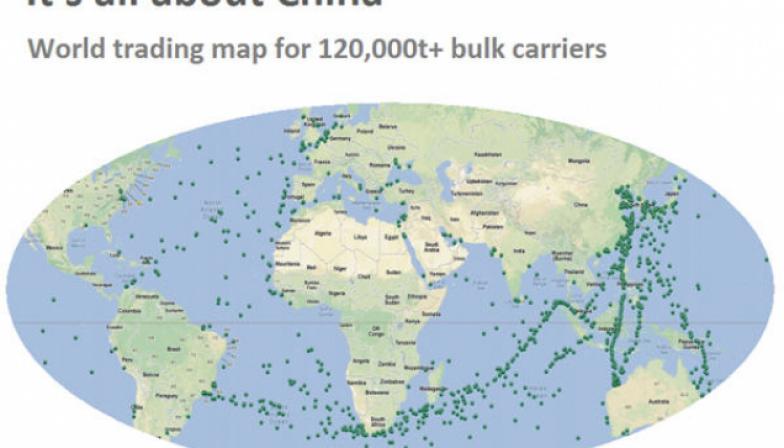The Baltic Dry Transport Index, which tracks about 50 mass transportation routes around the globe, became known at the beginning of a commodity supercycle led by China in the early 2000s.
Of the freight rates monitored by the exchange, rates for Capesize vessels (so named because the vessels are too large to pass through the Panama Canal) provide a better understanding of the state of demand for goods in China.
The Capesize Index, which measures ship demand based on ship availability, has fallen to 1 point. One single point. In early September, the index was at the level of 5043 points, although in April it reached a minimum of 92 points.
Capesize's daily rates hit a record $ 234,000 in June 2008, when shipbuilders were unable to catch up quickly with trade growth. Currently, the rate has fallen below $ 4,000, the levels that were last seen in 2016.
The beginning of 2016 was the nadir of the metal mining and mining cycle, when iron ore could be mined for less than $ 40 per ton, and copper for less than $ 2 per pound.
China's imported iron ore price of 62% plummeted after resuming activity after the Chinese Lunar New Year break to $ 84.94 per dry metric ton, Fastmarkets MB reports. Now the decline reaches 9.4%.
Capesize type vessels can transport approximately 160,000–180,000 tons and are the dominant vessels for world trade in iron ore in the amount of 1.5 billion tons.
The steelmaking ingredient accounts for more than one fifth of the global trade in bulk materials and is the second best-selling commodity after crude oil and is ahead of coal.
The wider Baltic Dry index, which also tracks soft goods production, halved over the month, also dropping to the 2016 level.



